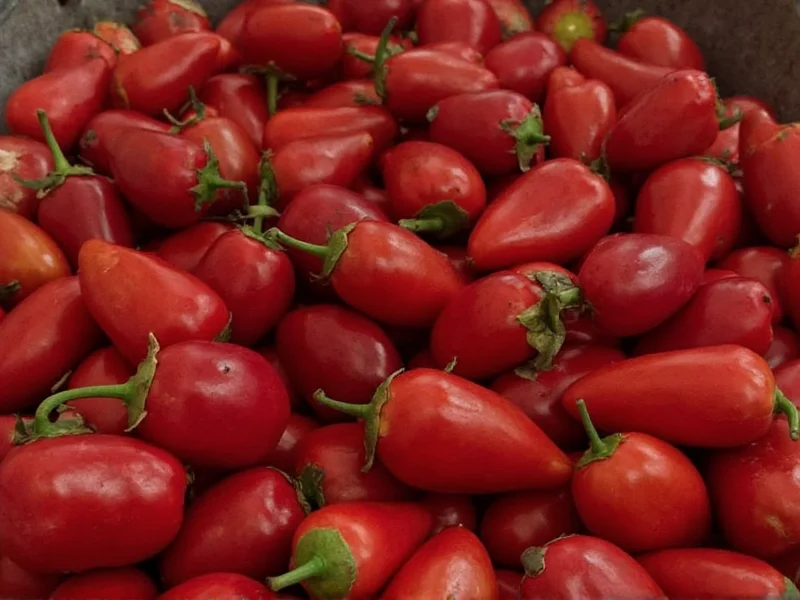Understanding chamoy memes requires first knowing what chamoy actually is. Chamoy is a traditional Mexican sauce or seasoning made from pickled fruit (typically apricots, plums, or mangoes), chili powder, lime, and salt. Its distinctive flavor profile combines sweet, sour, salty, and spicy elements in varying proportions depending on the recipe. This complex taste experience—often described as simultaneously delightful and overwhelming—became the perfect foundation for internet humor.
The Cultural Roots of Chamoy
Chamoy's history traces back to Asian influences on Mexican cuisine, particularly the Chinese practice of preserving fruits in brine and chili. Over time, this technique merged with Mexican flavors to create what we now recognize as chamoy. Available in various forms—from thick sauces to dry powders—it's commonly used on fruits, vegetables, and even candies throughout Mexico and Mexican communities worldwide.
How Chamoy Became Meme-Worthy
The transition from traditional condiment to internet sensation began around 2018-2019 when social media users, particularly on TikTok and Instagram, started sharing reaction videos to chamoy's intense flavor. What made chamoy particularly meme-worthy was its ability to provoke strong, visible reactions. Unlike many foods that might be spicy or sour, chamoy delivers a complex sensory experience that often results in immediate, exaggerated facial expressions—perfect for viral content.
Early chamoy memes typically featured:
- Reaction videos showing people trying chamoy for the first time
- Comparisons between mild and extremely spicy chamoy varieties
- "Chamoy challenges" where participants would consume increasingly potent versions
- Photoshopped images of historical figures or celebrities reacting to chamoy
| Meme Format | Description | Popularity Peak |
|---|---|---|
| Reaction Videos | Real-time facial expressions after tasting chamoy | 2020-2021 |
| Chamoy Challenges | Progressive consumption of increasingly spicy versions | 2021-2022 |
| Cultural Mashups | Chamoy in unexpected contexts (e.g., on pizza, ice cream) | 2022-Present |
| Historical Chamoy | Photoshopped images of historical figures with chamoy | 2021 |
The Psychology Behind Chamoy Memes' Virality
Chamoy memes succeeded where other food trends might not have because they tap into several psychological principles that drive social media engagement. The immediate, visible reaction to chamoy creates what psychologists call "emotional contagion"—viewers instinctively mirror the expressions they see, creating a shared experience. Additionally, the contrast between chamoy's sweet appearance and intense flavor creates cognitive dissonance that makes the reaction more surprising and shareable.
Another factor in chamoy memes' success is their accessibility. Unlike some internet trends that require specific knowledge or equipment, anyone can purchase chamoy at most Latin American grocery stores or even some mainstream supermarkets. This low barrier to entry allowed the meme format to spread rapidly across diverse communities.
Regional Variations in Chamoy Memes
As chamoy memes spread beyond their Mexican and Mexican-American origins, regional variations emerged:
- U.S. Mainstream Adaptation: Often simplified to focus primarily on the spicy aspect, sometimes missing the nuanced sweet-sour balance that defines authentic chamoy
- Mexican-Origin Content: Tends to emphasize traditional preparation methods and regional variations within Mexico
- Global Interpretations: In non-Spanish speaking countries, chamoy memes sometimes get conflated with other spicy sauces, leading to creative but inaccurate interpretations
Chamoy Memes as Cultural Bridge
Perhaps the most significant aspect of chamoy memes is their role as cultural ambassadors. For many people outside Mexican communities, these memes served as their first introduction to chamoy and, by extension, to broader aspects of Mexican food culture. While some early interpretations were reductive or inaccurate, the overall effect has been increased interest in authentic Mexican cuisine and ingredients.
Food historians note that chamoy memes represent a modern example of how digital culture can drive interest in traditional foods. Unlike corporate marketing campaigns, this organic, user-generated promotion has created genuine curiosity about Mexican culinary traditions among younger demographics who might not have encountered them otherwise.
Evolving Chamoy Meme Formats
As with all internet phenomena, chamoy memes have evolved beyond their initial reaction-video format. Current trends include:
- Chamoy ASMR: Close-up videos focusing on the sound and texture of applying chamoy
- Culinary Experiments: Chefs and home cooks using chamoy in unexpected recipes
- Nostalgia Content: Older users sharing childhood memories of chamoy from their abuelitas (grandmothers)
- Political Satire: Using chamoy as a metaphor for complex political situations ("this policy has the sweet-sour-spicy complexity of chamoy")
Why Chamoy Endures as a Meme Format
While many food trends fade quickly, chamoy memes have demonstrated remarkable staying power for several reasons:
- Sensory Universality: Everyone understands the experience of tasting something unexpectedly intense
- Cultural Resonance: Connects to broader themes of cultural identity and food heritage
- Adaptability: The basic format can be applied to countless variations and contexts
- Community Building: Creates shared experiences across cultural boundaries
Unlike fleeting meme formats that rely solely on shock value, chamoy memes have evolved into a sustainable cultural phenomenon that continues to generate new content while maintaining its core appeal.
Responsible Engagement with Chamoy Memes
As with any cultural phenomenon that crosses community boundaries, there are considerations for respectful engagement with chamoy memes. Food anthropologists suggest that appreciating chamoy memes while also learning about the cultural context behind the condiment leads to more meaningful engagement. This includes:
- Recognizing chamoy's place within broader Mexican culinary traditions
- Avoiding reductionist portrayals that focus only on the spicy aspect
- Supporting authentic Mexican businesses that produce traditional chamoy
- Understanding that not all Mexican people regularly consume chamoy (it's popular but not universal)
When approached with cultural awareness, chamoy memes can serve as entry points to deeper appreciation of Mexican food culture rather than superficial appropriations.











 浙公网安备
33010002000092号
浙公网安备
33010002000092号 浙B2-20120091-4
浙B2-20120091-4